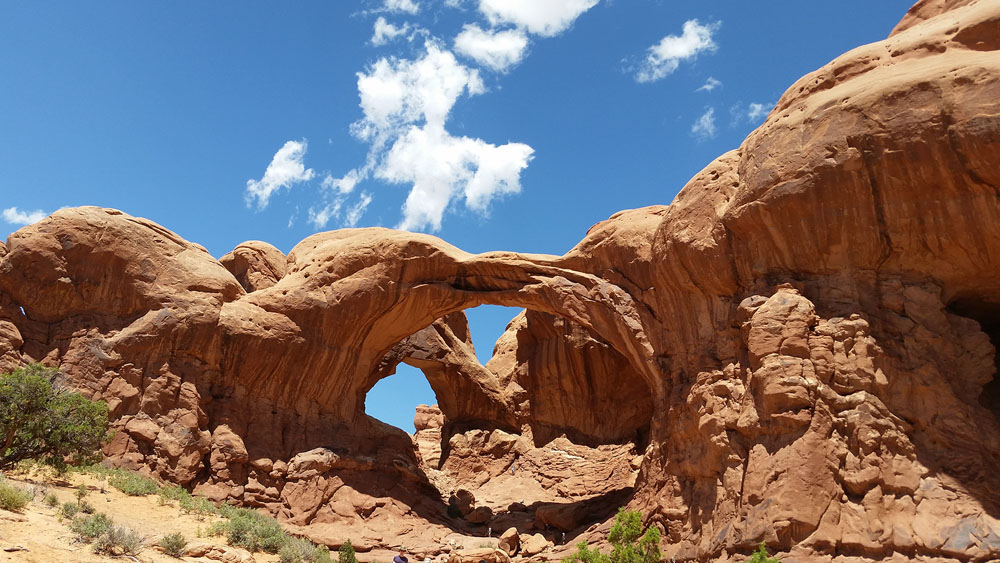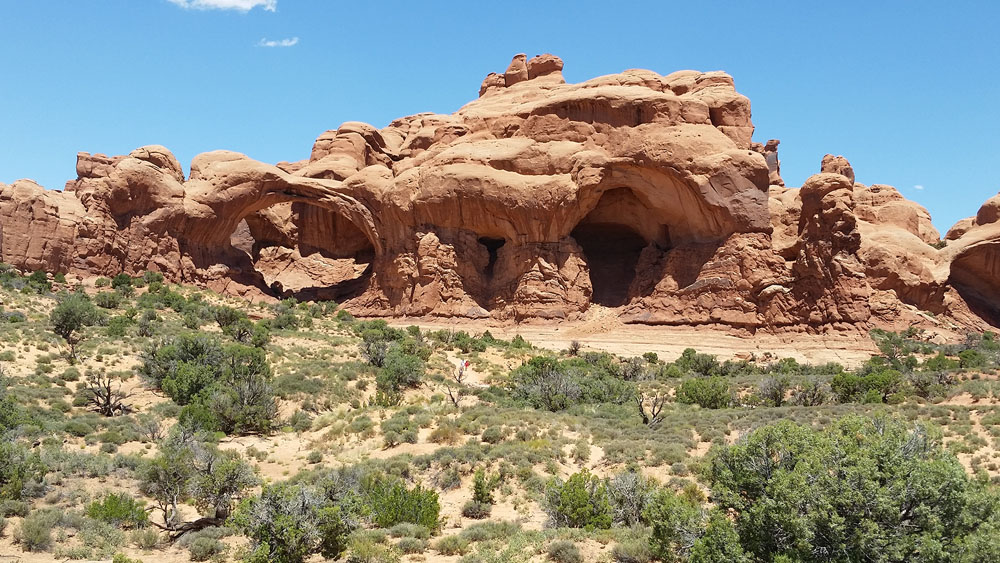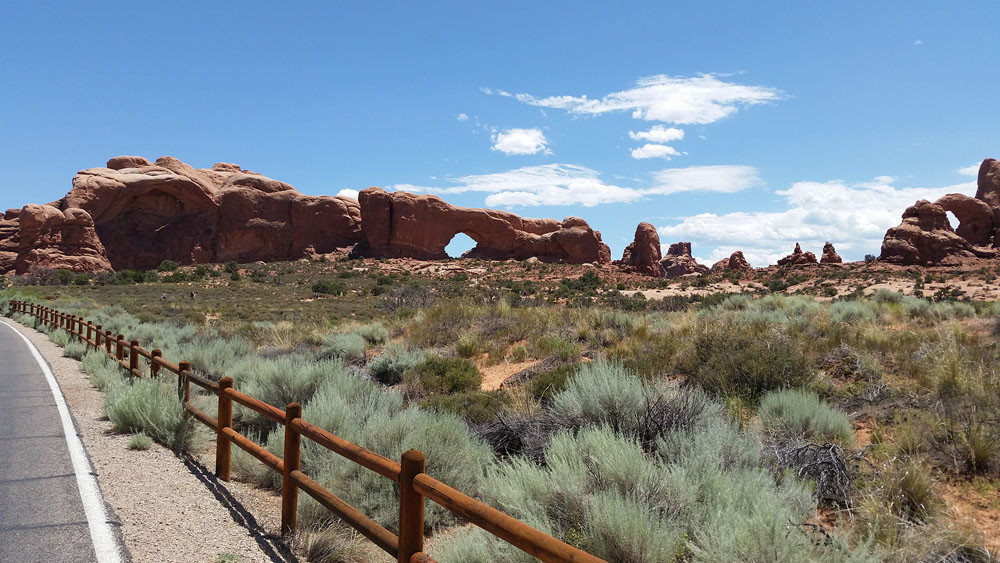Editor’s note: A familiar name to many RVers, Sue Bray has worked in the RV industry for 35+ years. Over the summer, Sue, her husband Mel, and their boxer Harley took off to tour the country in their 31’ fifth wheel, with no exact plans except to have an adventure. She’ll be chronicling their trip as well as sharing lessons learned along the way in this new ongoing blog series.
True to its name, Arches National Park outside of Moab, Utah, displays around 2,500 natural arches of amazing sizes, shapes, and colors. It’s easy to look at the arches and picture all sorts of shapes and figures in this magnificent masterpiece of nature. My imagination was definitely running wild in this park, and I often found myself taking a second or even third look at these breathtaking arch formations.
A beautifully paved 18-mile road dissects the park, with viewpoints all along the way. Nine short hikes, ranging from a quarter-mile to two miles, allow visitors to get closer to these natural wonders. Dogs are not allowed on the trails, although they can be walked on leashes in the viewpoint areas. This park can easily be explored in a day.
Geologists tell us that these formations were formed by water, extreme temperatures, and underground salt movement. One of the first formations you see as you drive into the park, the 55-foot boulder Balanced Rock, is actually held in place by calcium carbonate that cements the sand grains, but when you see it, it looks as if it is defying gravity and about to topple over any minute.
Further along the way, a 300-foot long graceful horizontal “fin” is Landscape Arch, one of the longest known natural arches in the world. There’s an easy well-constructed trail that allows visitors to get closer, and also reveals six more arches just beyond.
At the end of the road, Delicate Arch, perhaps the most photographed formation in the park (and currently seen on Utah license plates) waits for visitors. It can be seen from the road, but more spectacular views require a one-and-a-half-mile hike, climbing 500 feet.
The Arches area can be very hot and dry in the summer months, and it definitely was when we visited in July, restricting some of our hiking activities. Devil’s Garden is the lone campground in the park, but has no hookups available, and is generally booked well in advance. Fortunately, there are a number of nice RV parks in Moab, with lots of power for air conditioning.
The nearby La Sal mountain range provides a perfect backdrop contrasting with the red rocks, and its snowcapped mountains in winter only add to the beauty. The park is open to visitors year-round, and we definitely want to go back during colder months and take advantage of the longer hiking trails.
Regardless, we spent a sparkling clear summer day beneath the blue Utah skies marveling at these formations, making our visit so worthwhile. You can learn more about Arches National Park here: www.nps.gov/arch.
Until next time…
Related Blog: 6 Tips for Hot Weather RVing






All is well
How is the drive with a 26 ft motorhome
Congratulations on being able to explore this wonderful part of the country. Much of the RVing my wife and I have done has been during the winter months as we escape the cold Canadian winters where we live 3 hours north of Buffalo NY. In all our trips around the North American we always seem to get close to Utah during winter months. And the drive from the east is about 40 hours - one way - is a very large time commitment. Have fun wandering the country. Make sure you try souther Texas if you want to escape the winter chill. Falcon State Park is where we love to spend January for the warmth of the temps and people. The cost to camp there is also very reasonable, which helps with our retirement budget.